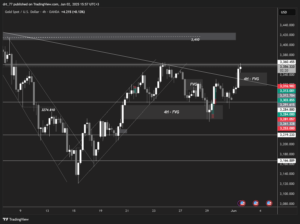The US House of Representatives approved legislation to limit the debt, crafted by President Joe Biden and House Speaker Kevin McCarthy, that would impose restrictions on government spending during the 2024 elections and avoid default in the unstable United States.
Lawmakers from both parties joined in approving the bill with a vote of 314-117 on Wednesday evening, sending the measure to the Senate for consideration as the virtual deadline approaches.
The vote strengthens Biden’s reputation for bipartisanship and cross-party work as he seeks a second term and allows McCarthy to claim success in his first major test as speaker.
The agreement garnered support from two-thirds of Republicans in the House, an essential show of confidence for McCarthy, whose narrow majority from the Republican Party makes him vulnerable to challenges from disgruntled members.
However, the bill ultimately received more votes from the Democratic minority than the majority in the Republican Party, a fact that conservative critics will use to argue that the speaker made a losing deal.
The outcome was a rare moment of agreement between the parties in the bitterly divided Washington.
President Biden, who watched the vote on television, described the House result as “good news for the American people and the American economy.”
The debt ceiling legislation will remove the threat of another default crisis for the remaining period of Biden’s current term, as the debt limit will be suspended until January 1, 2025.
In return, Democrats agreed to set a maximum level of federal spending until 2025, likely resulting in reduced services provided by the government.
The agreement now heads to the Senate, where approval is highly likely, and the only question is the timing.
The spending restrictions in the deal may significantly impact individuals, especially young university graduates who will have to resume student loan payments, as well as low-income Americans facing benefit restrictions or reduced services.
However, economists at Morgan Stanley estimate that the entire package will have a minimal impact on the overall US economy, likely resulting in a decrease of 0.1 percentage point in next year’s overall growth.
The tough choices regarding adjusting government services are mostly left to Congress to negotiate in separate spending packages due before October 1 of the next fiscal year.
Nevertheless, the agreement represents a turning point in reining government spending after years of related rescue operations in response to COVID that shattered records and Biden’s prominent initiatives to unleash significant government investments in infrastructure and climate change mitigation.
However, staunch conservatives condemned the middle-ground solution for not meeting Republican demands for larger spending cuts and stricter work requirements for food assistance recipients and other anti-poverty aid recipients.
Progressive Democrats expressed anger over the spending cuts in the agreement and the provisions that expedite permits for energy projects and expand work requirements for federal food assistance for low-income individuals.
Disclaimer: This article is not investment advice or an investment recommendation and should not be considered as such. The information above is not an invitation to trade and it does not guarantee or predict future performance. The investor is solely responsible for the risk of their decisions. The analysis and commentary presented do not include any consideration of your personal investment objectives, financial circumstances, or needs.





